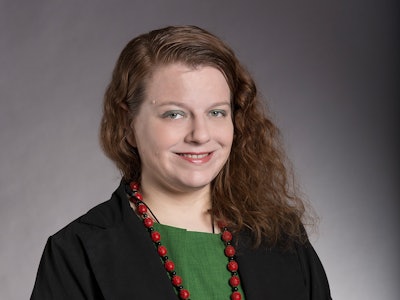 Dr. Autumn Green
Dr. Autumn GreenAcross the country, early childhood care and education programs have been hard hit by the COVID-19 pandemic. Most closed in March, and though some are reopening as they are allowed by states, it’s expected that many will never reopen. These programs were financially precarious before the pandemic, and after months of closures and now with new regulations around cleaning and social distancing, it’s tough to make the numbers add up.
Some of these child care centers were located on college campuses. In light of budgetary shortfalls, institutional priorities, and other concerns, some of these institutions have now announced that their campus child care centers will not reopen. Their closure is a major setback for a lot of people, but two groups in particular: college students who are parents, and students studying for degrees in early childhood education.
There are 3.8 million student parents in the United States — nearly a quarter of the undergraduate student population. While studies of student parent experiences show their capability, intelligence, and determination, they often struggle to complete their degrees due to compounding disadvantages. They are disproportionately low-income and students of color, especially Black women; nearly one in two Black female undergraduates is a mother. In addition, one in three first-generation college students is a parent. For these families, higher education is a path to economic mobility for both themselves and their children.
Research has identified child care as the most critical support service student parents need to be successful in college. Child care centers and programs located on campus best allow student parents to balance parenting with college. They are convenient, allowing parents to drop by between classes; they help student parents connect with each other for study groups, playdates and support. They also follow the same schedule as the college, so parents have fewer scheduling conflicts between the academic calendar and child care program breaks and in-service days. They often serve diverse families including faculty, staff, students, and the community, but some give admissions priorities, tuition discounts, or other special considerations to student families.
 Dr. Wendy Wagner Robeson
Dr. Wendy Wagner RobesonYet, according to researchers at the Institute for Women’s Policy Research, the number of campus child care centers in the United States declined between 2003 and 2015: public four-year institutions offering on-campus child care dropped from 55 to 49 percent, while community college centers dropped from 53 to 44 percent during the same period. The most recent data from the National Center for Education Statistics indicates that slightly less than half of U.S. postsecondary institutions offer on-campus child care programs. Now, with the COVID-19 pandemic, even more will close.
At the same time, there is a teacher shortage among early childhood educators, creating demand for on-campus child care centers where students can pursue this career path. According to the Bureau of Labor Statistics, job openings for preschool teachers will grow by 10% between 2016 and 2026, but it is hard to recruit people to these jobs when wages remain low while educational requirements have increased over recent years. For students looking to meet the educational requirements, partnerships between college and university early childhood education departments and on-campus centers offer field placement and hands-on learning and observation opportunities. These centers are often of high quality and serve as examples to students studying to be educators. In response to COVID-19, a significant number of programs have now converted to online training models that postpone or eliminate classroom experience or direct work with children in any form. But many colleges had already moved to off-campus classroom placements even before the pandemic hit.
The early childhood education workforce has multiple demographic overlaps with student parents: It is a female-dominated field, increasingly populated by women of color. While early childhood education is a lower-wage occupation, caring for young children is one of the most essential and important careers in the modern economy. Educator training is thus critical, both to the safety, wellbeing and development of the children in care, and to teachers’ ability to achieve career and wage mobility that will keep them in the profession.
On-campus child care centers are therefore critical in serving the dual purpose of providing a rigorous applied teacher training experience and supporting student parents so they can get their degrees. When they close, it’s a significant loss for both these groups of people — largely women, often women of color.
Though colleges and universities are facing severe economic challenges due to the pandemic, they should not let these burdens fall disproportionately on their most vulnerable students. All parents deserve access to high-quality child care that allows them time to get their degrees in order to better their families’ lives. And we need well-trained educators to care for children while their parents work and study. It seems like a no-brainer to prioritize on-campus child care centers, which support both.
Dr. Autumn Green is a research scientist at the Wellesley Centers for Women at Wellesley College. Dr. Wendy Wagner Robeson is a senior research scientist at the Wellesley Centers for Women.















